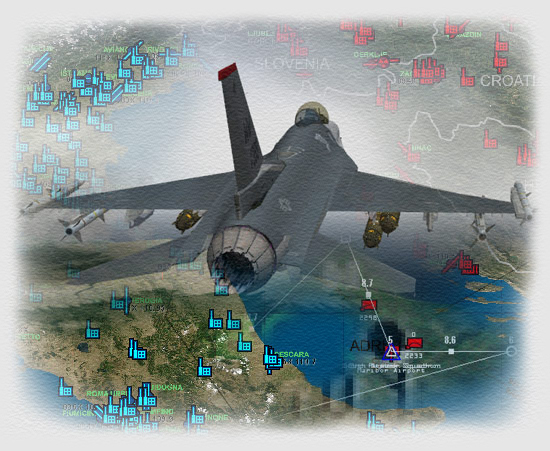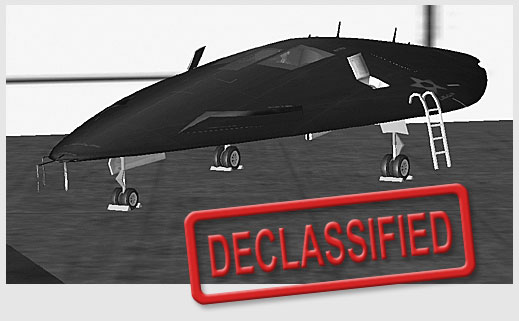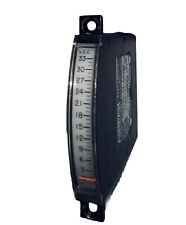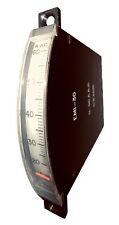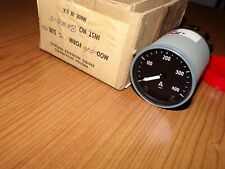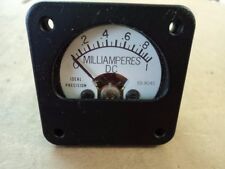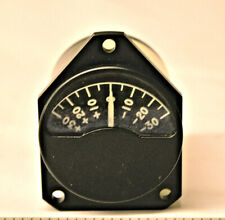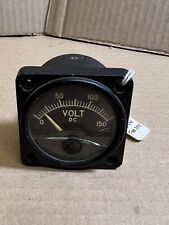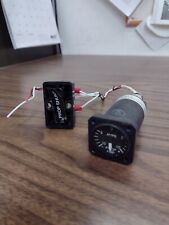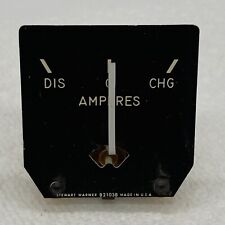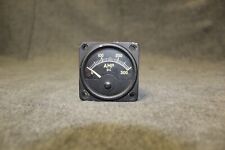The Pilot
Major Horace Killmore, USAF, was ideally qualified for the mission. An academy graduate, after one three-year tour in the F-15C, he was in the last class to qualify on the SR-71 before its retirement. He transitioned to the Blackbird’s stablemate at Beale AFB, the U-2, once the 71s were withdrawn from service. He had flown missions in support of Operation Desert Storm, Operation Deny Flight, Operation Deliberate Force, Operation Joint Endeavor, Operation Allied Force, Operation Enduring Freedom, and Operation Iraqi Freedom. In late 2003, he was accepted into the Air Force Test Pilot School at Edwards AFB. Upon his graduation, he was admitted (“More like shanghaied!” he laughed) into the Have Garnet program in December, 2004.
Not that he wanted to be anywhere else. “Helping build the first generation operational spaceplane — and it’s a single-seat fighter! — that’s the definition of a dream job!”
The Payload
Each of the bilateral weapons bays on the F-136 is about the same volume as the Q-bay on a late-model U-2. It was decided to equip the right-hand bay with a pallet holding an HR 329 high resolution, gyro-stabilized framing system, also known as the H-cam. This camera, featuring a 66-inch focal length and compact packaging thanks to folded optics, had been a standard U-2 payload for many years. Contrary to its usual installation configuration, the camera was mounted looking straight down rather than obliquely. The left-hand bay contained a palletized version of the Advanced Synthetic Aperture Radar System (ASARS), which was normally carried in a removable unit that replaced the U-2’s entire nose assembly. This system and the Tactical Radar Correlator were mounted above a large RF-transparent canoe fairing that contained its antenna array and could be extended in flight about 8 inches below the bay for its entire length. “The ASARS/TRAC combination gave us high fidelity tactical radar elint out to its effective range of 100 miles. With this we could get a good, real-time look at the EW and missile radars facing a strike approaching Tehran from the west and south. We needed just the outer approaches, because when you’re dropping guided munitions, you only need to be in the general neighborhood. Standoff range — ya gotta love it.”
One other piece of equipment not normally found in a test vehicle was a Link-16 real-time line-of-sight data link. Besides allowing text-based communications directly to the controlling authority (in this case to CENTCOM at McGill AFB in Tampa) it also provided a secure downlink channel for the ASARS data. Link-16 had been used to good effect in Operation Iraqi Freedom, in one case successfully assigning a B-1B to another nearby target after it had already passed the IP!
The Mission
How a hand-built test vehicle came to be used on an operational strategic reconnaissance flight is actually one of the easiest-to-understand aspects of the whole story. A lieutenant colonel who had been with Senior Matte from the beginning was promoted to full colonel and reassigned to NSA. When directed to find new intelligence collection channels, even unconventional ones, he thought immediately of the Have Garnet vehicle and the progress they’d made developing a reconnaissance payload for it. He was also aware of the vehicle’s capabilities: near hypersonic speeds at U-2 altitudes. Simulations had shown how vulnerable a slow-flying U-2 or Global Hawk would be over Iran. And it had long been known that the Iranians always scheduled their most sensitive operations around the only-too-predictable overhead satellite passes. A fast-moving reconnaissance platform, showing up at an unexpected time, could catch them by surprise and collect some otherwise unobtainable data. As it had been with the SR-71, speed was the factor that made the mission possible, and practical.

The Route.
The Have Garnet team had been looking for a way to demonstrate what their vehicle could do for some time. When approached by NSA, they jumped at the opportunity.
The target list was drawn up by a joint NSA-Have Garnet team. They settled on four targets:
Arak – Construction began in 1996 on a secret, off-the-books heavy water plant in Khondab, near Arak. A suspected reactor facility nearby was well under construction in early 2005. Most modern nuclear plants do not use heavy water, which moderates the reactions during nuclear fission. However, heavy water is still commonly used in the process of plutonium separation and uranium enrichment, essential components in the creation of both nuclear fuel and nuclear weapons.
Natanz – Another heavy water/nuclear fuel facility. Critical components at this facility were known to be of Pakistani design. Such foreign assistance could have accelerated the pace of the Iranian nuclear program by as much as ten years. Soil samples collected at this area by the UN’s International Atomic Energy Agency revealed the presence of two different isotopes of highly refined uranium, in significant quantities. The heart of the facility is the enormous Fuel Enrichment Plant complex, which was completed in late 2005 and was thought to contain as many as 5000 enrichment centrifuge units. This represents the capability to produce enough nuclear material for several weapons each year.
Esfahan – This was the center of Iran’s nuclear industry. Between them, the Nuclear Technology/Research Center and the University of Isfahan operated seven different reactors for experimentation, testing and training here alone. The university had large faculties in Science and Engineering and was the country’s preeminent technology education institution.
Bushehr – This 1000-megawatt electric power production plant had been designed and built for a cost of just over $1 billion by the Russians. Although originally planned as a two-reactor facility, only one unit was completed. The reactor complex had in fact been complete for some years, but the Russians had, as of early 2006, still not delivered the plant’s nuclear fuel. Evidence of an operational Bushehr plant, absent solid indication of a foreign fuel source, would be de facto proof of an Iranian domestic nuclear enrichment capability.
These locations would all be subjected to close scrutiny by the H-cam. The radar data collected with the ASARS/TRAC pod was considered a bonus — but also very much a poke in the eye to the Iranian defense forces. “The vehicle was designed to be low observable, but not through the familiar methods of the time, such as those used in the F-117 — faceting, loads of appliqué RAM, and tricked out door edges. Instead, the hull was formed by wrapping spun carbon over a mandrel, then impregnating it with a high-density polymer matrix. Several layers of varying formulation were applied, with intervals in the baking ovens between applications. The result was a semi-composite, semi-ceramic structure that was extremely lightweight and a natural radar trap. A radar operator looking at the thing at altitude would see something, but wouldn’t know what to call it. He’d probably have to convince himself that there was anything there at all.”
But things changed when the ASARS/TRAC pod was extended. “The transmit/receiving element for the ASARS is a huge bar of ferrous metal, and it bounces back a radar beam like a mirror reflecting a spotlight. Nothing to be done for it, it’s just the physics. When that array pops out, they have to know we’re there. But remember,” Killmore continued with a smile, “At that point we want them to know we’re there. We want them to light up every radar they have, looking for us, so the ASARS/TRAC system can get a good, clear look. We only need a couple of minutes to get the data, then the canoe goes back in and we’re invisible again. That’s the theory I was betting my life on.”




